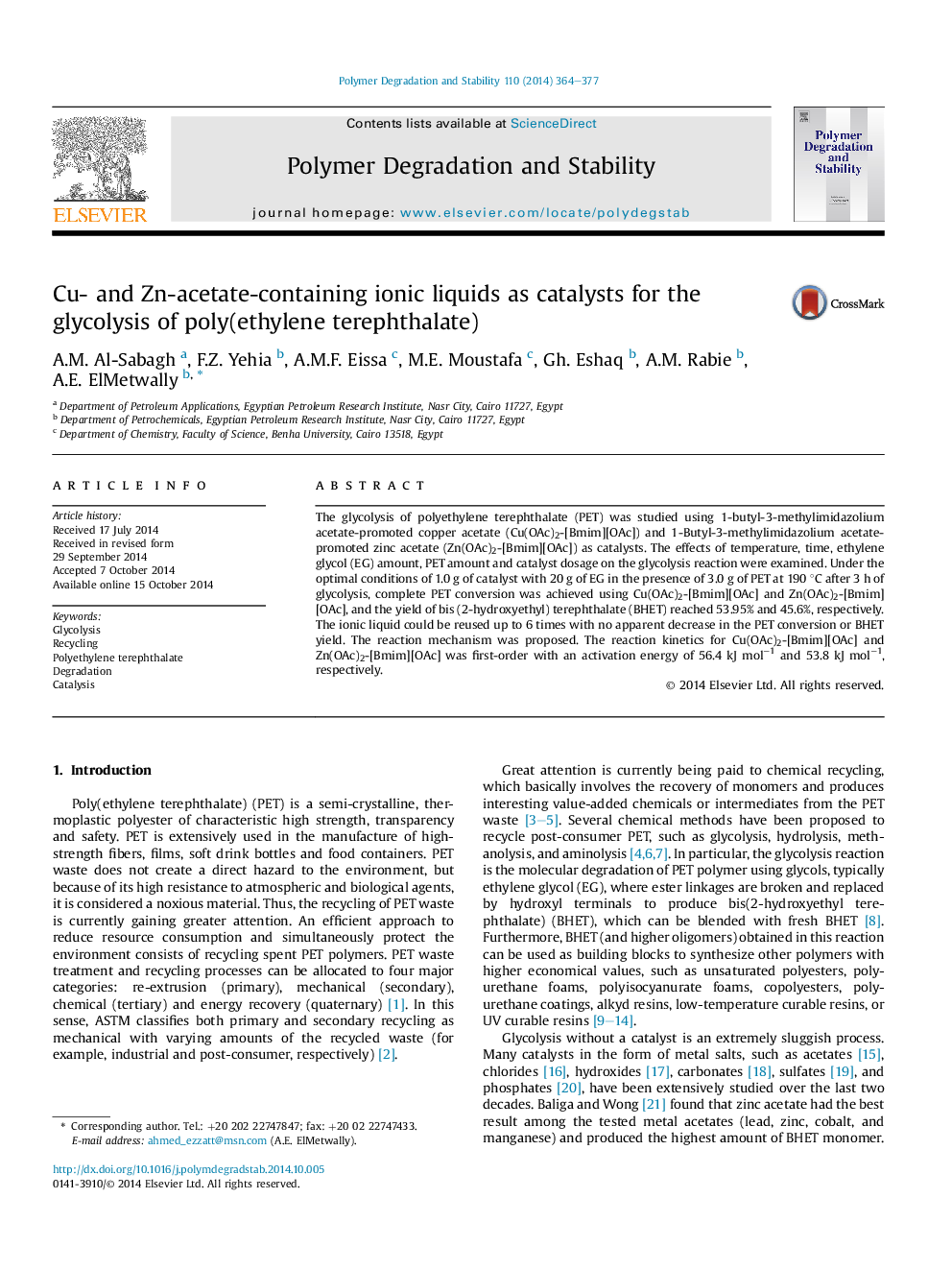| Article ID | Journal | Published Year | Pages | File Type |
|---|---|---|---|---|
| 5201671 | Polymer Degradation and Stability | 2014 | 14 Pages |
Abstract
The glycolysis of polyethylene terephthalate (PET) was studied using 1-butyl-3-methylimidazolium acetate-promoted copper acetate (Cu(OAc)2-[Bmim][OAc]) and 1-Butyl-3-methylimidazolium acetate-promoted zinc acetate (Zn(OAc)2-[Bmim][OAc]) as catalysts. The effects of temperature, time, ethylene glycol (EG) amount, PET amount and catalyst dosage on the glycolysis reaction were examined. Under the optimal conditions of 1.0 g of catalyst with 20 g of EG in the presence of 3.0 g of PET at 190 °C after 3 h of glycolysis, complete PET conversion was achieved using Cu(OAc)2-[Bmim][OAc] and Zn(OAc)2-[Bmim][OAc], and the yield of bis (2-hydroxyethyl) terephthalate (BHET) reached 53.95% and 45.6%, respectively. The ionic liquid could be reused up to 6 times with no apparent decrease in the PET conversion or BHET yield. The reaction mechanism was proposed. The reaction kinetics for Cu(OAc)2-[Bmim][OAc] and Zn(OAc)2-[Bmim][OAc] was first-order with an activation energy of 56.4 kJ molâ1 and 53.8 kJ molâ1, respectively.
Related Topics
Physical Sciences and Engineering
Chemistry
Organic Chemistry
Authors
A.M. Al-Sabagh, F.Z. Yehia, A.M.F. Eissa, M.E. Moustafa, Gh. Eshaq, A.M. Rabie, A.E. ElMetwally,
